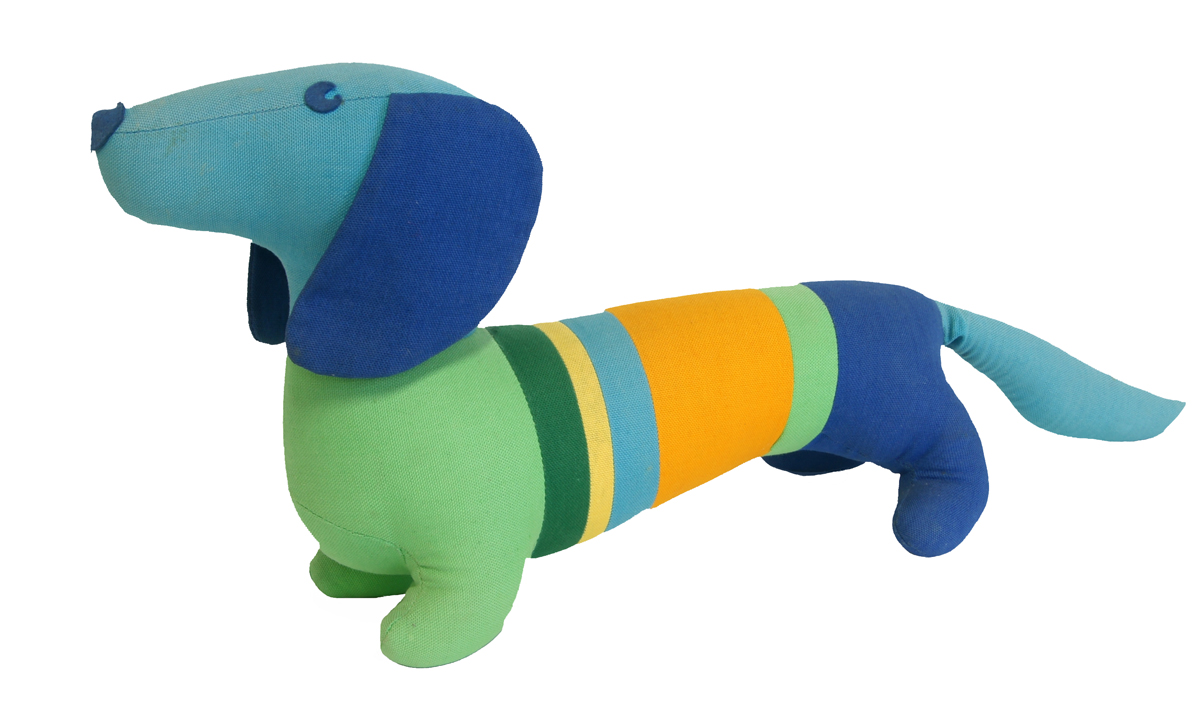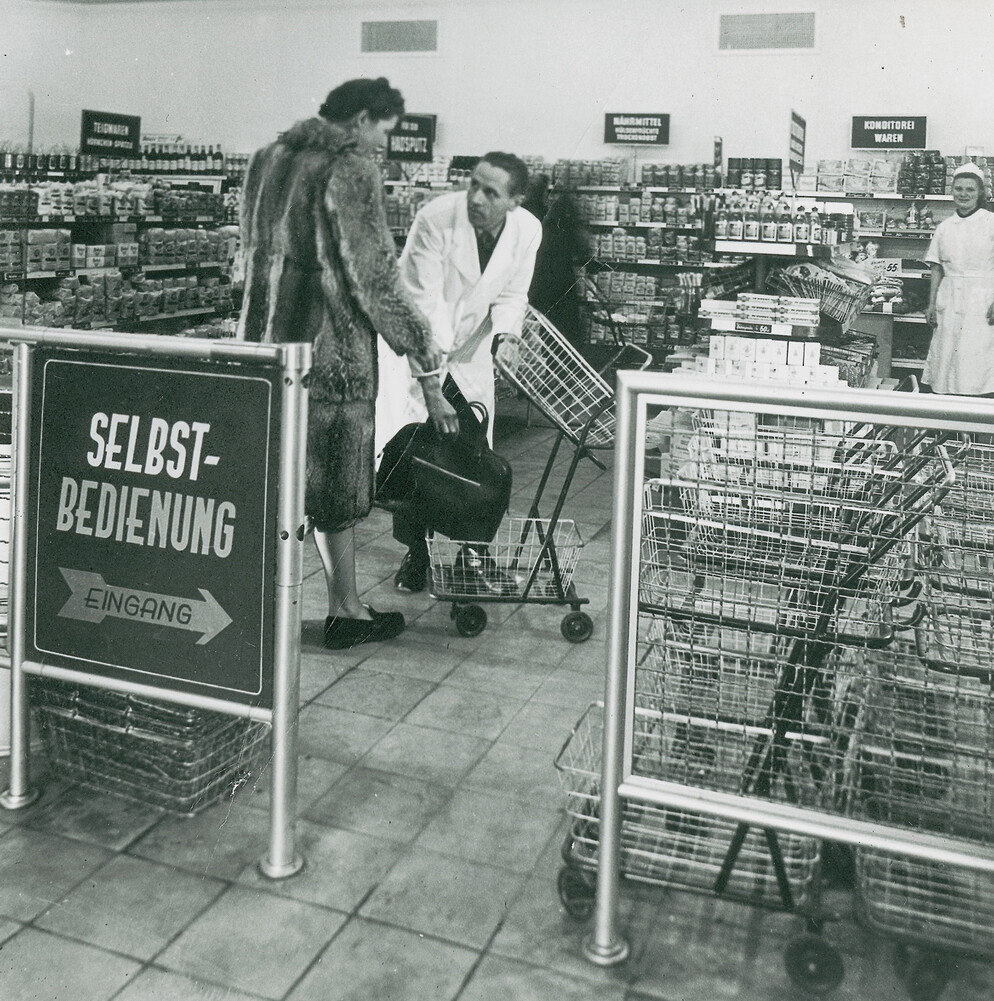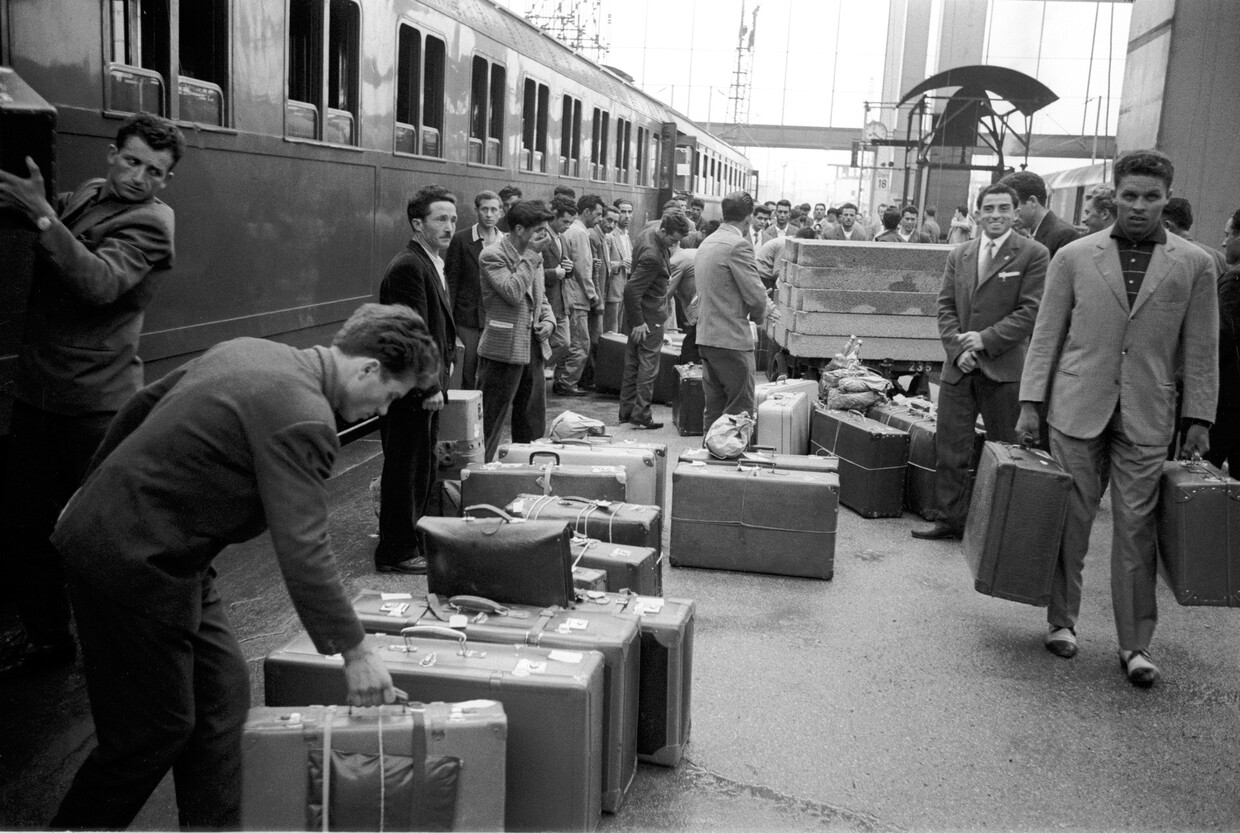Reconstruction - Wirtschaftswunder
Augsburg, Munich and Nuremberg are approximately half destroyed. Things are even worse in Würzburg: 21,000 out of 27,000 residences are “completely destroyed”. Should people leave the ruins behind and start anew elsewhere? Ultimately, people stay. The subterranean infrastructure, i.e. sewer lines and electrical cables, decide the issue. The cities’ “visual identity” is restored architecturally and modernized with restraint.
Mainstays such as the textile industry sustain the new beginning. Bavaria is fortunate to have its agriculture. Some forty percent of the workforce finds a livelihood there again in 1946. Rural regions initially take in the most displaced persons.
Currency reform in 1948 and a social market economy bring the breakthrough. Its architect Ludwig Erhard comes from Bavaria. Faster – higher – farther: In 1961, twice as many people are already working in industry as in agriculture. Mechanical engineering brings this about. Bavaria becomes car country. Many of the creations of the 1950s are manufactured in Bavaria: lsettas, Messerschmitt-Kabinenroller and Goggos. Trade and industry bring structural change. Since 1957, Bavaria has been growing more than the national average: The EEC makes it the export leader.
“Guest workers” play a major role in the economic upturn. Not much happens in some industries without them. Some return to their home countries later. Many more find a new home in Bavaria.
Munich represents modern Germany at the 1972 Olympics. Otl Aicher, the designer of the 1972 Olympics’ visual identity, sets standards in design and marketing and creates icons with “Waldi” (pictured below), dirndls, colors and pictograms. The Munich massacre overshadows the “cheerful games”.



